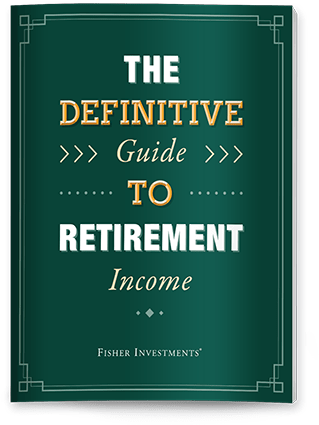Personal Wealth Management / Expert Commentary
3 Things You Need To Know This Week | Supreme Court & Tariffs, Jobs Data, Market Risks

Fisher Investments’ “3 Things You Need to Know This Week” is a weekly segment designed to help investors worldwide sift through the noise across financial media and understand what really matters for markets.
This week, we're covering:
- An update on legal challenges to US tariffs
- The latest job market data
- Potential market risks to watch
Transcript
Stephanie Kuehne:
Hello and welcome to Three Things You Need to Know this Week, our regular series designed to help you sift through the noise across financial media and understand what really matters for markets.
To stay up-to-date with our latest market insights, subscribe to our YouTube channel or visit FisherInvestments.com.
And with that, here are three things you need to know this week.
First, an update on legal challenges to US tariffs. On Wednesday, the US Supreme Court is set to begin hearing arguments about the legality of President Trump using the International Emergency Economic Powers Act of 1977 to impose tariffs on national security grounds. This case combines two other cases that challenge the use of reciprocal tariffs and the fentanyl related tariffs on Canada, Mexico and China. We've been tracking four possible outcomes for how this tariff situation might play out. And the Supreme Court case falls into our first scenario, which is that tariffs prove illegal and unenforceable. While we can't know how the court will rule, it may spark uncertainty regardless. If the US Supreme Court overturns lower court rulings, questions around the extent of limitations on the White House could swirl. If it upholds the rulings, it could force the government to refund roughly $89 billion in tariff revenue already collected. The mechanics of this are unclear. It would also raise questions about the trade deals struck since April, and it could rattle nerves as investors wait to see whether and how the administration attempts to replace the tariffs on different legal grounds. However, while the outcome of this case is unknowable for now, investors should focus on how the stock market has mostly adapted to these tariff shocks. If you look at market volatility now compared to 2018, when President Trump first used tariffs, you'll see a similar pattern. Markets get surprised at first and then they adjust and move on. Even with the recent ups and downs from the US-China trade escalation aren't as dramatic as what we saw back in April. Markets like clarity. Regardless of how this case ends up, markets should eventually get that, allowing stocks to move past tariff concerns and climb the proverbial Wall of Worry.
Next, the latest job market data. Later this week, we'll finally get a fresh look at the state of the US labor market with data from September. We would normally be getting October data at this point, but the data releases have been delayed due to the US government shutdown. Investors will be keeping a close eye on this data, assessing potential impacts from federal reductions in force, tied to the ongoing shutdown and corporate layoff announcements attributed to AI. To us, these presumptive conclusions miss the bigger picture. Job reports get a lot of attention, but what they tell us is what already happened, not what's ahead. They're what we call lagging indicators, especially in this case with data coming out a month later than usual. Markets are driven by economic growth and company earnings. Those come first. Hiring follows. Stock prices move based on what investors expect to happen next, not on backward looking reports that get revised later anyway. The bottom line: don't put too much weight on any single job report. It's one piece of the puzzle, and it's not what drives market movement in the long term.
Finally, potential market negatives that we're keeping an eye on. With the end of 2025 fast approaching, there are a few factors that we're keeping our eye on now. Next year marks the second year of President Trump's four-year term, and historically, second years are -40% of the time, with 2022 being the most recent example. Stocks follow an identifiable presidential-term pattern. The first two years have a higher chance of being negative than the third and fourth years. We attribute this pattern to the party in power often losing seats in the midterm elections, preventing them from passing legislation that impacts how businesses operate. This tends to concentrate legislative uncertainty in the first two years, which then can contribute to uncertainty for businesses and be a headwind for markets. Another potential market moving factor that we're keeping our eye on is a potentially disruptive liquidity crunch tied to alternative assets, which have seen increasing inflows of funds from retail investors. If investors were to need cash in a market downturn, they may not be able to sell out of these assets. This would then cause them to sell out of more liquid assets like stocks and bonds. Again, we remain bullish. But these are a few examples of potential downside risks that we're keeping our eye on.
And that's it for this episode of 3 Things You Need to Know this Week. For more of our thoughts on markets, check out This Week in Review, released every Friday. You can also visit FisherInvestments.com.
Thanks for tuning in and don't forget to hit like and subscribe!

See Our Investment Guides
The world of investing can seem like a giant maze. Fisher Investments has developed several informational and educational guides tackling a variety of investing topics.




